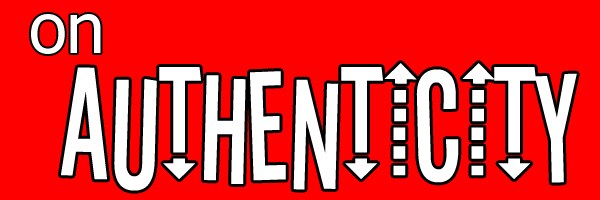
What is AUTHENTICITY? Great question. Sometimes, we have to stop and think about this. Are we truly authentic or are we just going through the motions? To be authentic, we should be asking that question all the time. As we ask that question, all the time, then it goes without saying, but I’ll say it anyway, we are more than likely answering honestly. Otherwise, why bother? I mean, you will only be fooling yourself.
Now to answer the question of what is AUTHENTICITY?
Authenticity is about as real as you can get. It is the true definition of WYSIWYG (What You See Is What You Get). Anything less, is not authentic. Of course, everyone has different standards on what authenticity is and how they interpret it. Be aware and remain cognizant of that fact, otherwise you will greatly disappointed when others do not think, behave, or act like you. That is all right, being different and unique is part of being authentic, so expect that.
Now there will be times when interacting with others that you will be told to “keep it real” do not take it too personally. Remember what I wrote about everyone have different perspectives. However, you should check yourself to ensure you remove any “fluff” that may have crept in during the dialogue, monologue, or any exchange of information. The best advice here is to get to the heart of the matter as soon as possible without pulling any punches.
Remember, you are a leader and as a leader you are expected to remain authentic 100% of the time. You cannot be a part time leader. Please do not ever think you can half-ass your way into becoming a leader, let alone an authentic leader. You have to commit all the time, non-stop, you have to be a leader with a mindset something like General George S. Patton described when he said, “We herd sheep, we drive cattle, we lead people. Lead me, follow me, or get out of my way.” Meaning, that there is no time to waste, know who you lead and then do it.
Being authentic when it comes to being a leader means you have what it takes to be that leader. To be the leader that has demonstrated that his or her values and beliefs are on display every time the leader does something. This is critical, in that people are watching. As people are always watching and that means, clearly, the leader must be the example.
To be the example, you have to take time to “keep yourself real”. As a human being, you have to take the time to stay grounded. Grounded in the reality that is the here and now. By staying grounded and keeping yourself real, you can only get better. Remember you can always get better but never perfect. Talk about staying grounded.
While taking the time to stay grounded is excellent, on the other side neglecting to take the time means that you can stop being your true self. This is where the need to impress others with smoke and mirrors creeps in and settles before you know it. Once the need to impress others has settled in, getting out of it may be one of the most difficult things you, as a leader, can do. The smoke, mirrors, bells, and whistles can be pretty seductive and the need for it to continue can be overwhelming. Remember, a flash in the pan is not what we need in leaders. Leading is what we need. Leading is what everyone wants and deserves.
Authenticity can go wrong when you continue to sell what has been sold. One starts to question what is going on. Minimizing the questions means there is less smoke, less mirrors and less vagueness in what is going on. As a leader, being transparent will cut down the questions. Being open ensures that others are not led down a wrong path or question why they are following you. That is not a good thing.
To be authentic, stay open, remain transparent and above all be yourself.
–David Guerra
